On July 7, the Department of Veterans Affairs announced a major reversal: instead of executing their planned reduction-in-force of 80,000 staff, they’ll now be scaling that number back to 30,000. This isn’t a full reversal—but it’s a strategic retreat. One that wouldn’t have happened without months of sustained pressure from veterans, military families, frontline workers, and allied advocates across the country. For half a year, we’ve been confronting a calculated attempt to dismantle the VA from within. And the reason this reversal happened isn’t because the administration saw the light. It’s because we made them feel the heat.




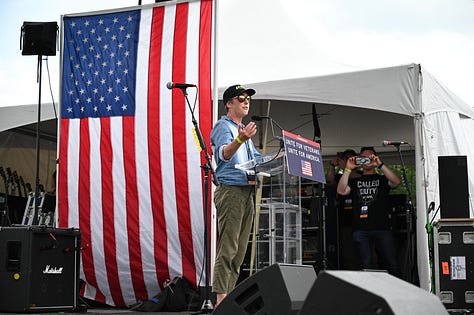



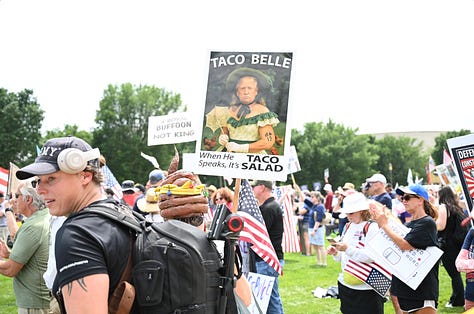
Let’s be clear about what was at stake. The 80,000 job cuts that Trump’s VA planned would have gutted the infrastructure of veteran care in America. These weren’t redundant or symbolic roles. They included physicians, psychologists, claims processors, cancer researchers, benefits specialists, hospital administrators, and cemetery caretakers. People whose work is essential to delivering the promises America made to its veterans. Their absence wouldn’t have just slowed down the system. It would have caused delays in cancer treatment, interruptions in mental health care, and backlogs that could stretch years.
It would have pushed a stressed system to the point of collapse. And that was the point.
This attack wasn’t a one-off bureaucratic miscalculation. It was part of the broader right-wing project to sabotage and dismantle the social safety net (as we’ve seen so clearly with Trump’s disastrous budget bill that was just signed into law). Republican leadership has spent decades pushing the lie that "government doesn’t work"—then systematically starving and undermining the very institutions they want to destroy. At the VA, their playbook is clear: sabotage it from the inside, use the dysfunction as proof that public health care can’t work, and sell off services to private contractors where profit trumps care. For veterans, that means worse outcomes, less accountability, and more out-of-pocket costs.
This context makes the rollback of the 80,000 job cut plan even more significant. This wasn’t just about saving jobs. It was about defending the existence of a functional, public VA system. It was a red line. And veterans across the political spectrum made clear: we’re not going to stand by while you erase the care we earned.
And yes, that includes veterans who have supported Trump in the past. There is a persistent stereotype that veterans are uniformly aligned with MAGA. That we’re all right-wing, unquestioning, and loyal to Trump no matter what. That stereotype is not just inaccurate—it’s dangerous. Because when Trump came for the VA, it broke through even the loyalty of many of his supporters. I heard from veterans who voted for him twice—some three times—who were stunned and outraged to learn that he was ready to gut the agencies they depend on for cancer care, mental health services, and financial stability. Some will never leave the cult. But many others are waking up. And this betrayal was a turning point.
That outrage turned into organizing. On June 6, 2025, thousands of veterans, active-duty troops, military families, and supporters gathered on the National Mall for the Unite for Veterans rally that I helped to organize. They came from every corner of the country. Some drove through the night and slept in their cars. Others pooled resources just to cover travel. They didn’t just come to see the Dropkick Murphys, but to stand in solidarity with their sisters-and-brothers-in-arms, with the widowers and widows, with the orphaned children who have all made incredible sacrifices and deserve the support of this nation’s government.
They came to demand that America honor its promises.
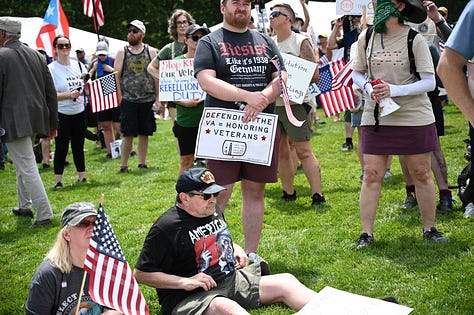



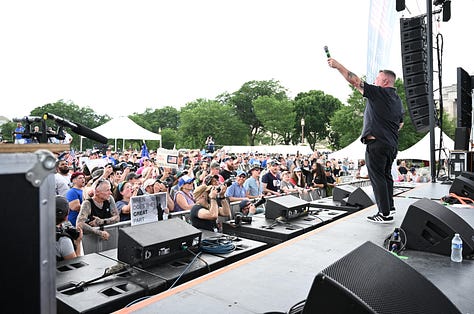



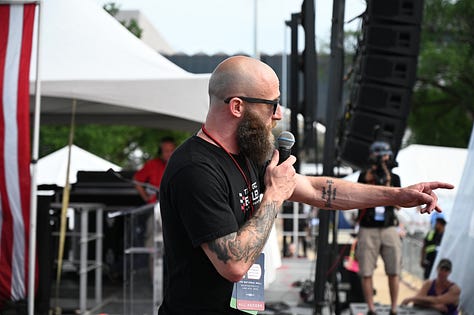
We didn’t just pick a random day — our turnout certainly would have been even better if we planned this for a Saturday. Our choice of the date was as strategic as it was symbolic. June 6th is D-Day—a date chosen with intention. A reminder that veterans have always had to fight for what they were promised, just like the Bonus Army of 1932. That day, we built something powerful. We stood in the nation’s capital and made it undeniable: the veteran community is organized, principled, and ready to fight for our future. And when Trump tried to use a $60 million military-themed birthday parade as a show of strength a week later, the contrast couldn’t have been clearer. His turnout was weak. Ours was passionate and rooted in real need. We beat him. And we did it with grassroots power.
That public showing of strength shifted the political calculus. The VA’s walk-back wasn’t some quiet course correction. It was a response to public outrage and organizing. The administration knew they couldn’t win this fight. They knew that pushing ahead with 80,000 cuts would trigger even more mass protests, it would further demoralize the VA workforce, and alienate veterans across the board.
They blinked. Because we didn’t.
But let’s not confuse this with a full victory. Thirty thousand job cuts is still the largest workforce reduction in the history of the VA. The damage from just the threat of mass layoffs is already being felt. Morale among VA staff has plummeted. The providers I depend on—like my psychologist, my psychiatrist, my social worker—have spent months under immense stress, not knowing if they’d still have a job next quarter. That anxiety bleeds into their work. It affects every veteran they serve. The leadership of Secretary Doug Collins has been nothing short of catastrophic, and we’ll be dealing with the aftermath of this mismanagement for years to come.
Still, this is a moment we should claim. We stopped a disaster. We didn’t prevent all harm, but we blunted the worst of it. We proved that Trump does not have unlimited political capital. We showed that veterans are not a monolith—we’re a political force. And we reminded America that strategic protest, public pressure, and disciplined organizing work.
So no, we’re not done. This was a win, but it was also a warning shot. We can’t go back to business as usual. This fight showed what we’re capable of when we act together. Now we need to build on that momentum. That means continuing to organize at both the local and national level. Pressuring elected officials. Defending whistleblowers and frontline workers. Escalating demands for VA reinvestment. And holding leaders accountable for the chaos they’ve inflicted.
Veterans are not props. We are not a backdrop for political theater. We are a multiracial, multigenerational, politically diverse force that has the power to shape the future of this country. We have served. We have sacrificed. We come from every corner of this country, and the world. And now, we are organizing under the banner of the Unite for Veterans Coalition.
This is what going on offense looks like. And we’re just getting started.

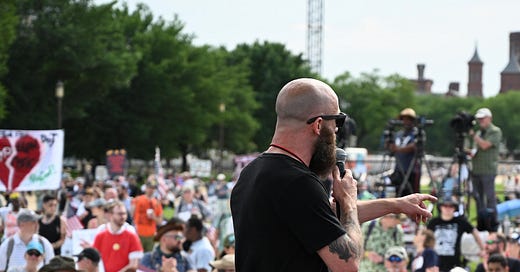










Share this post